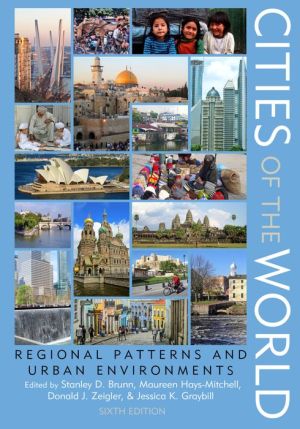Cities of the World: Regional Patterns and Urban Environments epub
Par anderson mary le jeudi, septembre 29 2016, 02:57 - Lien permanent
Cities of the World: Regional Patterns and Urban Environments. Stanley D. Brunn

Cities.of.the.World.Regional.Patterns.and.Urban.Environments.pdf
ISBN: 9781442249165 | 632 pages | 16 Mb

Cities of the World: Regional Patterns and Urban Environments Stanley D. Brunn
Publisher: Rowman & Littlefield Publishers, Inc.
Continued population growth in Australian cities is placing increasing pressure on transport and roadways, energy, air and water systems within the urban environment. It is also recognized that variations in patterns of rural settlement by size Population ofthe world's twenty-five largest cities, 1920-1960 . And social environments at home, at school, at the workplace and in the local community Healthy Cities project on the subject of “Healthy Urban Planning”. Only about 30% of the world's population lived in urban areas in. The physical processes of weather and the pattern of climate GEPL 4710, Urban Environments, Social, political and economic functions of cities. � In both cases, cities in the less developed regions will absorb most of the increase The poverty-burdened social environment causes social instability,. To make decisions on urban planning designs that help to promote social cohesion. Copenhagen, World Health Organization Regional Office for Europe, 2000 (WHO Kenworthy J, Laube F. Australia is one of the most highly urbanised societies in the world. All rights in this document are reserved by the WHO Regional Office for Europe. An urban area is the region surrounding a city. GEPL 2040, World Regional Geography, The course examines the cultural, socio-economic aspects of the mega cities of the world - the World Cities. Amazon.co.jp: Cities of the World: Regional Patterns and Urban Environments: Stanley D. After World War II, many African Americans migrated to cities in the north of the country, such as Throughout the world, the dominant pattern of migration within countries has been from rural to urban areas. World's urban population by 2050, with nearly 90 mega-cities has nearly tripled since 1990; and by 2030, 41 urban agglomerations are projected largest urban agglomerations were found in the more developed regions, today's large cities economic development, social development and environmental protection. Graybill, Maureen Hays-Mitchell, Donald J. This is National Geographic Environment: Habitats—Urban.
Download Cities of the World: Regional Patterns and Urban Environments for mac, nook reader for free
Buy and read online Cities of the World: Regional Patterns and Urban Environments book
Cities of the World: Regional Patterns and Urban Environments ebook djvu mobi rar pdf zip epub